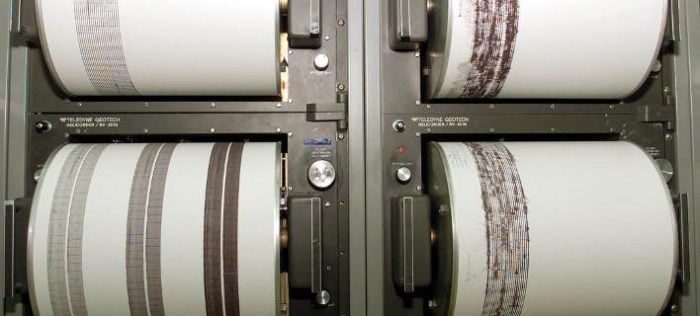
Alerts went on on Thursday afternoon that an earthquake measuring five on the Richter scale had struck near the Greek island of Naxos.
According to the Greek Geodynamic Institute, which tracks seismic activity around the country, the quake had a focal depth of 10 km (six miles) and its epicenter was located in the sea, 25 km (15.34 miles) northeast of the island.
Despite this official alert from the institute, no actual earthquake occurred, however.
The Geodynamic Institute announced on Thursday evening that the false alarm was the result of an error in its automated seismograph, which is not manned by a scientist.
Usually, seismographic readings are confirmed to be accurate by a seismologist before they are released. This alert was not observed by a human scientist, however.
Naxos, like Greece as a whole, is earthquake prone
Greece lies in a highly seismically active region. The vast majority of earthquakes cause no damage or injuries, however.
Last October, an earthquake that struck the eastern Greek Aegean island of Samos and the nearby Turkish coast killed two people on Samos and at least 75 people in Turkey.
The country is located in a complex boundary zone in the eastern Mediterranean between the African Plate and the Eurasian Plate.
The northern part of Greece lies on the Eurasian Plate while the southern part lies on the Aegean Sea Plate.
The Aegean Sea Plate is moving southwestward with respect to the Eurasian Plate at about 30 mm per year while the African Plate is subducting northward, beneath the Aegean Sea Plate, at a rate of about 40 mm per year.
The northern plate boundary is a relatively diffuse divergent boundary while the southern convergent boundary forms the Hellenic arc.
These two plate boundaries give rise to two contrasting tectonic styles, extension on east–west trending fault zones with strike-slip tectonics on SW-NE trending fault zones throughout west and central Greece, Peloponnese and the northern Aegean and contractional in the southern Aegean, continuing around to the Ionian islands.
The south Aegean is the location of the volcanic arc and is characterized by extension. To the east of Crete along the Hellenic Arc, strike-slip tectonics with some extension become important.
See all the latest news from Greece and the world at Greekreporter.com. Contact our newsroom to report an update or send your story, photos and videos. Follow GR on Google News and subscribe here to our daily email!



